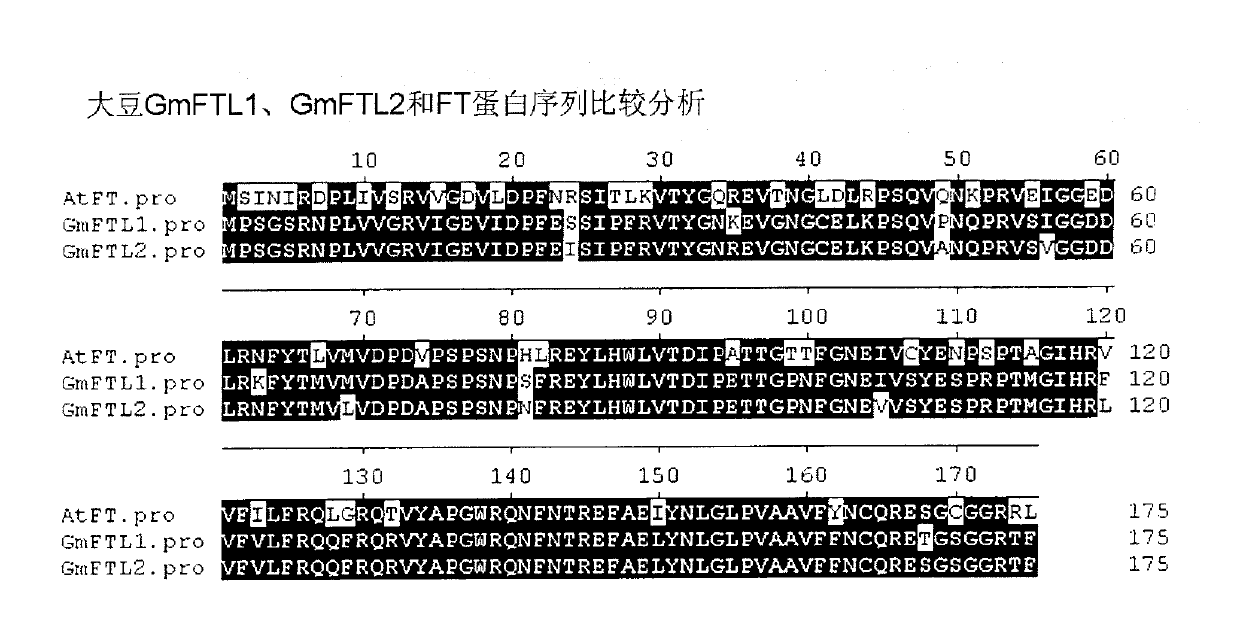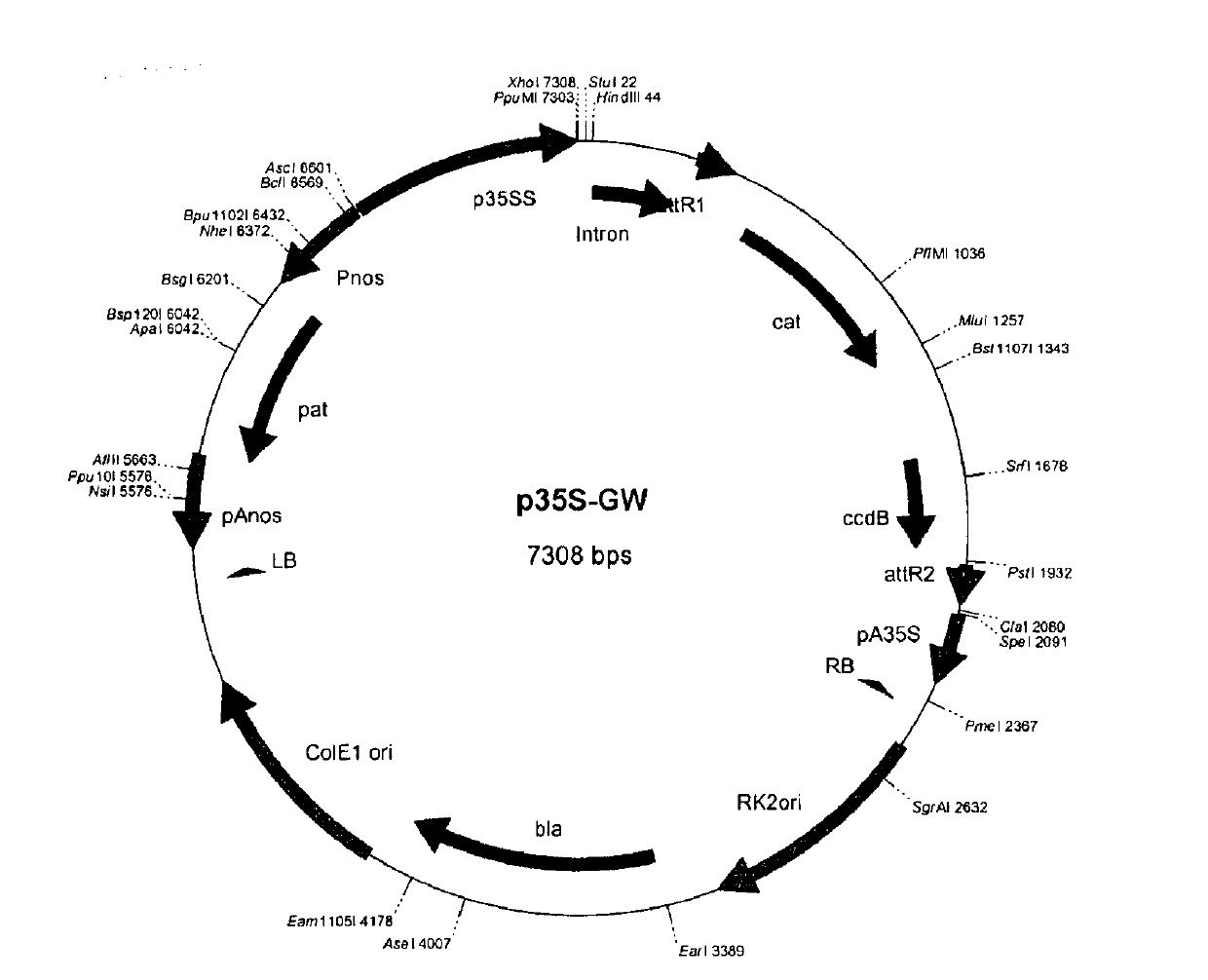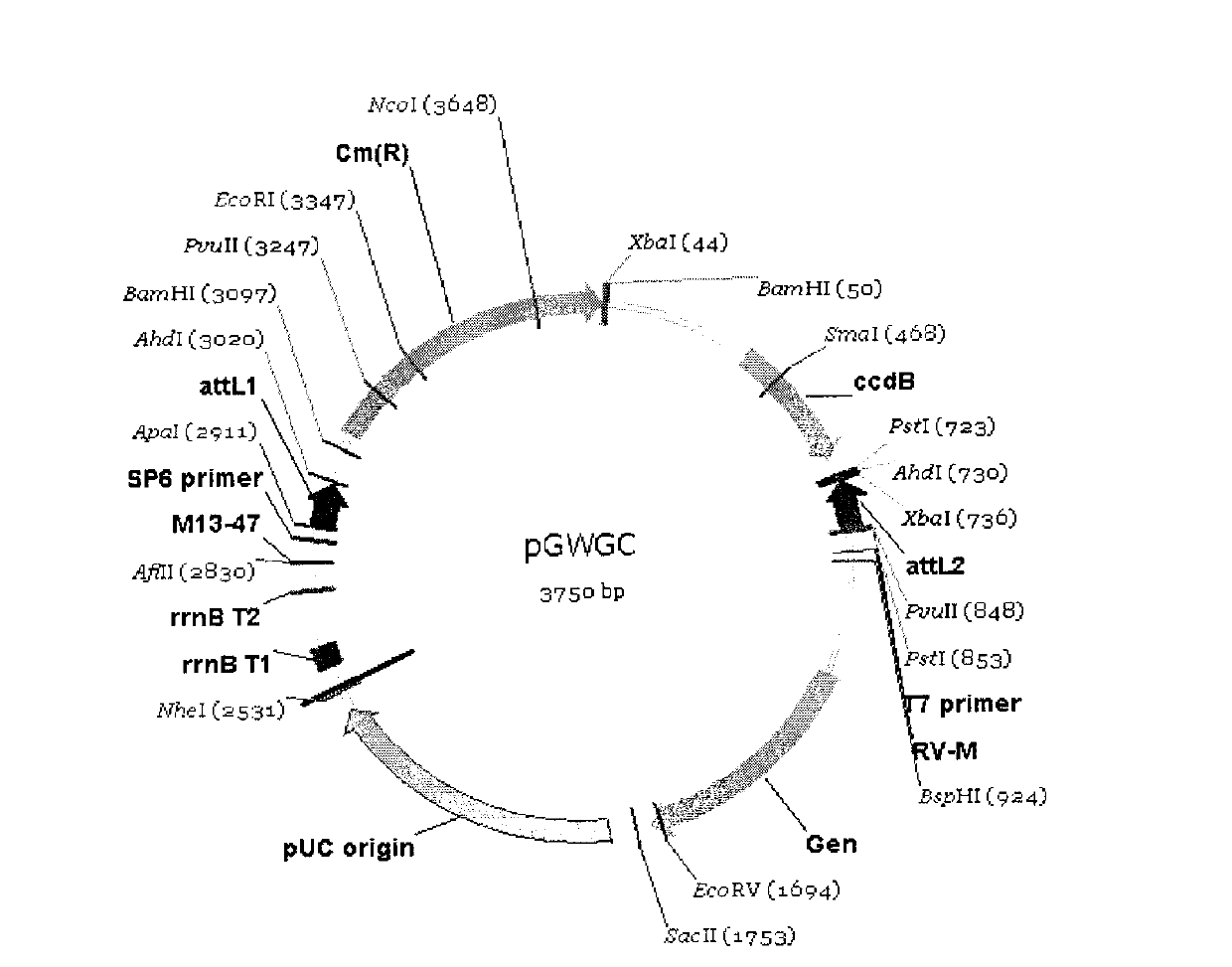Soybean GmFTL1 protein and soybean GmFTL2 protein as well as applications thereof
A soybean and protein technology, applied in the field of genetic engineering, can solve the problems of changing plant sensitivity and flowering time, and achieve the effect of shortening flowering time, strong effect and shortening growth period
- Summary
- Abstract
- Description
- Claims
- Application Information
AI Technical Summary
Problems solved by technology
Method used
Image
Examples
Embodiment 1
[0026] Example 1: Cloning of soybean flowering genes GmFTL1 and GmFTL2
[0027] GmFTL1 and GmFTL2, its gene sequence is shown in SEQ ID NO.3 and SEQ ID NO.4; the amino acid sequence of the protein encoded by it is shown in SEQ ID NO.1 and SEQ ID NO.2.
Embodiment 2
[0028] Embodiment 2: Structural analysis of soybean flowering gene GmFTL1 and GmFTL2 encoded protein (see figure 1 )
[0029] The homology between GmFTL1 and GmFTL2 protein sequences of soybean flowering gene is greater than 94.3%, and the C-terminal functional domain is highly homologous to Arabidopsis, but there are important differences. For example, the 128th amino acid residue of soybean GmFTL1 and GmFTL2 protein is glutamine (Q), the 129th is phenylalanine (F), the 132nd is arginine (R), and the 150th amino acid residue is It is leucine (L), and the corresponding parts of Arabidopsis are leucine (L), glycine (G), threonine (T) and isoleucine (I). These differences lead to higher activity of GmFTL1 and GmFTL2 than Arabidopsis FT.
Embodiment 3
[0030] Embodiment 3: Soybean flowering gene GmFTL1 and GmFTL2 plant expression vector
[0031] Soybean flowering genes GmFTL1 and GmFTL2 were constructed in figure 2 The indicated plant expression vector p35S-GW is used to overexpress soybean flowering genes GmFTL1 and GmFTL2 in plants to study their functions. The transformation method of plants is carried out by Agrobacterium-mediated method. Screening in plants is marked Bar.
PUM
 Login to View More
Login to View More Abstract
Description
Claims
Application Information
 Login to View More
Login to View More - R&D
- Intellectual Property
- Life Sciences
- Materials
- Tech Scout
- Unparalleled Data Quality
- Higher Quality Content
- 60% Fewer Hallucinations
Browse by: Latest US Patents, China's latest patents, Technical Efficacy Thesaurus, Application Domain, Technology Topic, Popular Technical Reports.
© 2025 PatSnap. All rights reserved.Legal|Privacy policy|Modern Slavery Act Transparency Statement|Sitemap|About US| Contact US: help@patsnap.com



